Powered by almost 6,000 consented research participants, 23andMe’s Lupus Research study helped our scientists learn more about this difficult to treat and chronic autoimmune disease.
Researchers from 23andMe and our collaborators at Pfizer were able to replicate known genetic associations for lupus, but, unfortunately, they did not uncover any new genetic associations.
Even though this study is one of the world’s largest genetic studies of lupus to date, it may not have been large enough to detect novel associations. We know genetics plays a significant role in the risk for the condition, and our study found that about 28 percent of those who participated in this research also had a first-degree relative — a parent, child, or sibling — who has lupus.
Beyond that, 23andMe did uncover deeper insights into non-genetic factors and symptoms associated with the disease. 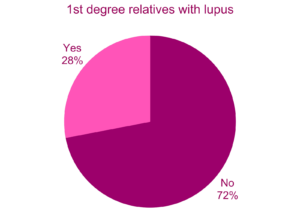
“While new genetic factors were not uncovered, the information from the surveys provide insight, in some cases validating what we hear anecdotally,” said Diane Gross, National Director of Advocacy and Programs, Lupus Research Alliance (LRA).
A non-profit, LRA, helps fund innovative lupus research to improve diagnosis and treatment.
“This information should be very helpful to people with lupus and their support networks,” said Gross. “While every case of lupus is different, it is important for people to understand they are not alone. It can also be useful for healthcare providers to understand some of the most common symptoms people experience so when a patient shows up in their office reporting these symptoms, they think about lupus. Early diagnosis and treatment are important to slow the pace of the damage from the disease”
Now that 23andMe’s study is closed, our researchers wanted to share some of what we’ve learned.
Important Demographics
The size of the study meant that a much larger number of people from underrepresented populations participated than in previous studies.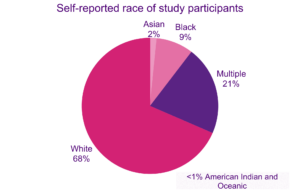
Lupus disproportionately impacts women of color. In fact, Blacks, Latinos, and Asians are two to three times more likely to develop lupus than white women, according to the Lupus Foundation of America. Most of 23andMe’s Lupus study participants are women, and about 9 percent are Black, about 21 percent are multi-racial, just under 2 percent are Asian and about 68 percent are white.
While the study isn’t fully reflective of the population with lupus, the initiative includes the largest number of Blacks in a genetic study of lupus ever conducted.
Difficult to Diagnose
One of the many confounding aspects of the disease is that it can impact almost any part of the body — the skin, joints, or various organs. The body’s own immune system attacks tissues and organs, and that, in turn, results in inflammation. 
This varied aspect of the disease may also explain why it was difficult to identify any new genetic associations. It is possible that a much larger cohort than 5,000 people is needed to find additional genetic associations for the disease. In addition, because lupus presents in so many different ways — often with symptoms that are similar to other diseases — it is difficult to diagnose.
That certainly was seen in our study.
Participants reported that on average it took about six years from when they first started experiencing symptoms to the first diagnosis of lupus by a doctor. This can be incredibly frustrating for those struggling with symptoms, but unsure of what is causing them.
Devastating Impacts
Beyond how long it can take to diagnose the disease, lupus takes an incredible toll on one’s body, which we also saw in the data.

Almost all our participants reported numerous different symptoms, ranging from loss of hair, sores in the mouth and nose, and rashes or blotching of the skin. Two-thirds of participants had sores in their mouth or nose, and a similar percentage reported having skin reactions after being in the sun. About 60 percent of participants had rashes on their cheeks, and a third saw blisters or bullae on their skin. Finally, 22 percent reported that lupus left them with scarring lesions.
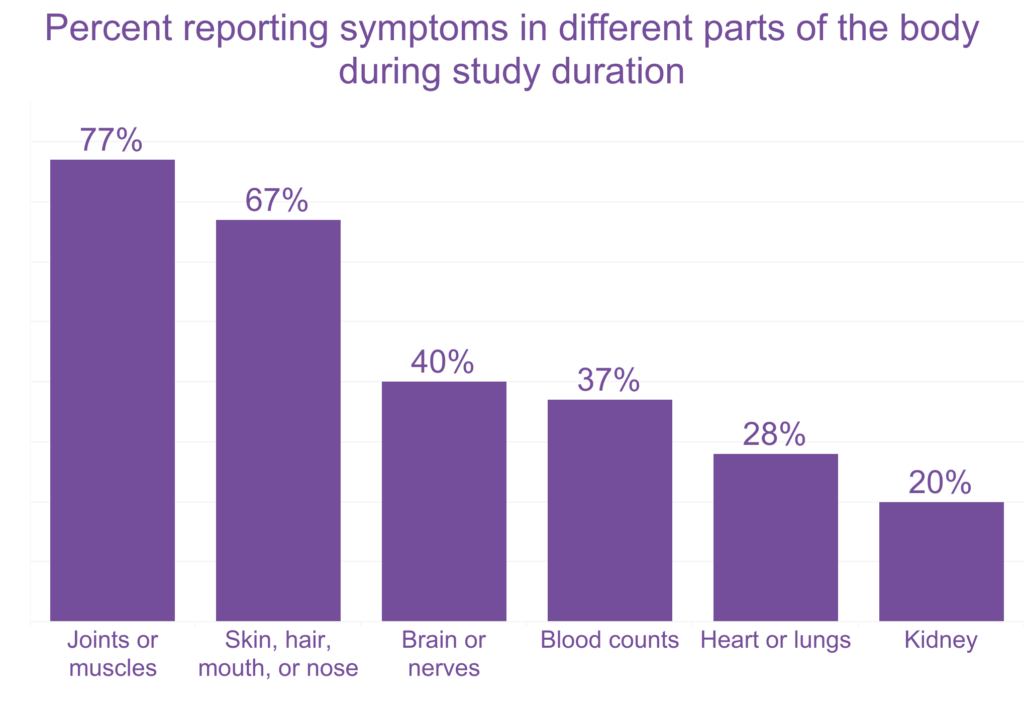
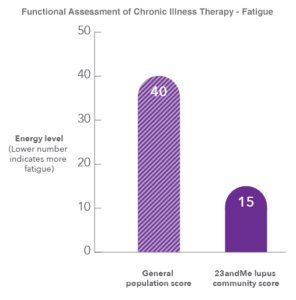
Those were just the skin-related symptoms. The vast majority of those in our study, 87 percent, experienced joint or muscle pain when first diagnosed with lupus. 77 percent experienced joint or muscle pain during the duration of the study.
Illustrating just how serious this illness is, just under half of those in the survey, 49 percent, said they experienced a flare-up of disease-related symptoms in the last year. Known within the lupus community simply as “flares,” only 5 percent of participants reported no flares during the previous 12 months.
Taken together these symptoms are serious enough that 43 percent of our participants reported that 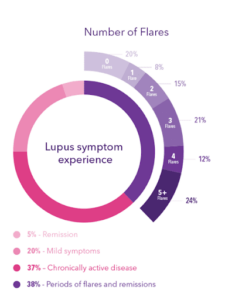 their lupus-related symptoms required hospitalization at some point. Many had infections serious enough to require treatment with antibiotics, with about 28 percent reporting getting an antibiotic injection and about 27 percent receiving such treatment intravenously.
their lupus-related symptoms required hospitalization at some point. Many had infections serious enough to require treatment with antibiotics, with about 28 percent reporting getting an antibiotic injection and about 27 percent receiving such treatment intravenously.
These symptoms also make it harder to day-in-and-day-out, meaning that 71 percent of participants said lupus impacted their ability to work.
Lupus and Other Conditions
Simply dealing with lupus and its many symptoms can also undercut one’s health in other ways.
Our data show a significant association between those diagnosed with lupus and poor sleep quality, for instance, which has its own impact on one’s health and well-being. About 44 percent said that along with lupus they’d been diagnosed with high blood pressure. About 30% said they’d been diagnosed with rheumatoid arthritis at some point.

And most telling in how devastating lupus can be, 27 percent of our Lupus Research Study participants, reported that they had been diagnosed with depression or major depressive disorder since being diagnosed with lupus. In fact, lupus patients are at four times greater risk of having major depression when compared to those without the disease among 23andMe research participants.
What’s Next?
We started this work more than four years ago with the hope that it could aid those searching for better ways to treat lupus. This study shows that there is still much to be done to find new treatments. We hope the information shared in this post is useful to all those interested in learning more about the experience of those with lupus. The more we understand about not just the genetics of lupus but also the differences in how the disease develops in different people, the closer we will get to understanding how best to treat it.
Thank you to all those who participated in 23andMe’s Lupus Research study, and who made this work possible.